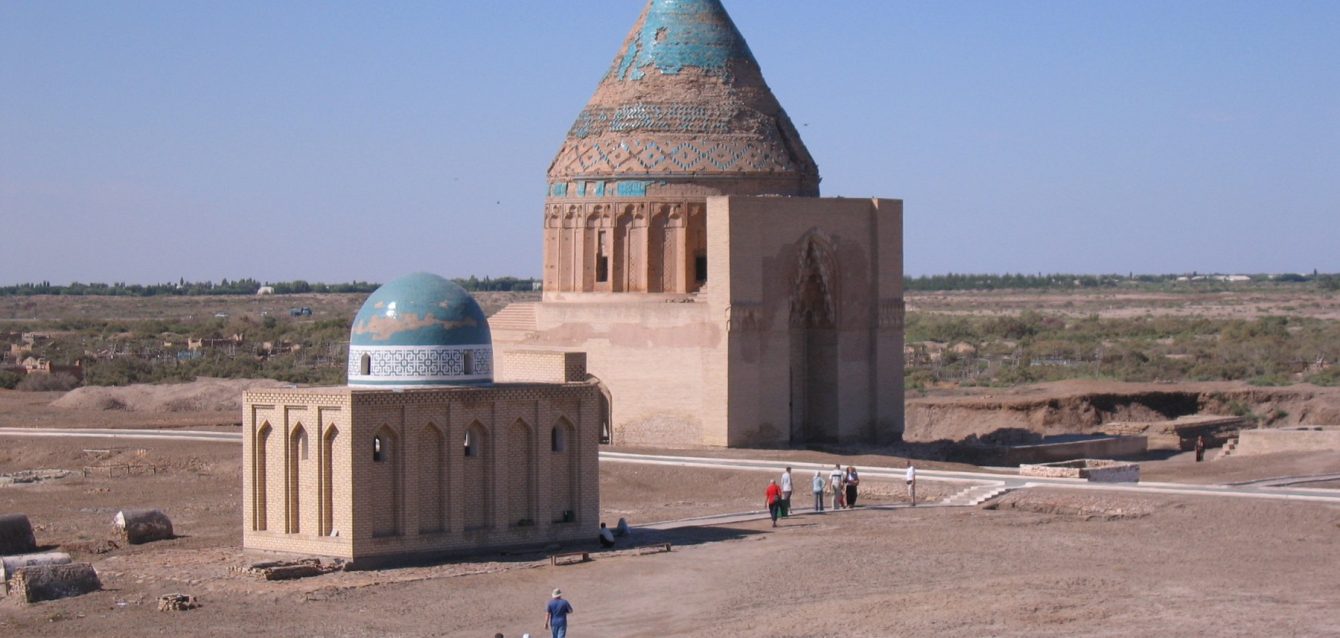Ancient Koneurgench.
The ancient Koneurgench – Koneurgenç soil contains unique examples of the unique cultural heritage of the Turkmen people and the world. It is the responsibility of all nations of the world to preserve and preserve his memories for future generations. Koneurgench is a world-famous cultural center and a beautiful city, and various historical sources and sources of information from different periods have been reported. Today, these rich pasts are architectural monuments that we have inherited as art that cannot be reproduced. In 2005, the historical and cultural monuments of this ancient city, which has experienced many historical and life problems, were inscribed on the UNESCO World Heritage List. In September 2008, the International Council “Nejmeddin Kubra and the Spiritual and Cultural World of the East” was held in Turkmenistan, as well as in December 2010 in Dashoguz “The Ancient Turkmen State and Central Asia in the First Half of the 13th Century”. The purpose of the councils is to study the history of the Turkmen state of Köneürgengen, to generalize the experience of foreign scientists and to identify new sources related to them, to study, reconstruct and preserve archaeological monuments, as well as to develop a new draft of scientific research on the study of the ancient, medieval, modern and modern history, culture and folk creativity of the Turkmen people and the establishment of mutually beneficial cooperation in relation to the implementation of the Sustainable Development Goals. Of great importance is the study of the historical and cultural memorabilia inherited from our ancestors, the preservation and transmission of them to future generations, and the dissemination of new discoveries and sources throughout the world. As the capital of the ancient Khorezm state, Urgensky has long been famous for its culture, science, and art. For a variety of reasons, the capital has been moved from here. Elsewhere (in present-day Khorezm), a new city was built, and the city was also named Urgen. At first, it was called Ürgench, which means “old, ancient.” Here, too, every monument, every hill has a great history and an interesting legend. The works of Chinese historians affirm that Köneürgen was a major scientific and economic center of the time. Abu Rayhan Birou left a note in the 10th century that there was a large library in the city. The famous “Mamun’s Academy” was also in operation. Its creation paved the way for the emergence of a flourishing school of mathematicians and astronomers, and the development of Köneürgenge into an internationally important commercial center. The reason for the creation of the “Academy” was the connection of the ancient Khorezm culture with the Arabic language, Islamic science and culture. The king of Khorezm, Allaeddin Tekesh ibn Il-Arslan, created a library that was considered the largest of its time, which contained undiscovered books. Imam Shihabeddin Hiwaki was not only the leading administrator of the Turkmen state in the late 12th and early 13th centuries, but he was also known as a prominent scholar. During his studies at the main madrasah in Köneürgenj, he built an unparalleled library. According to some historical sources, the name of Imam Shihabeddin Hiwakin is associated with the name of Ahmed Ibn Omar Abuljennap Najmeddin Kubra al-Hiwaki, who was born in Köneürgen in 1145 and was the founder of the Kubra school of Socialism. It has been revealed that the poet and scholar Najmeddin Kubra has more than 30 works in Arabic and Persian, the copies of which have survived to this day. His 44-part novel and about 80 of his novels have survived, which have been written by scholars interested in the literary creativity of Nejmeddin Kubra. As these examples show, Nejmeddin Kubra’s rubani, which is a part of his literary creativity, is distinguished by its poignancy and depth of meaning. These specimens are also valuable because they are the epitome of the spiritual world of the great sheikh. The great man Nejmeddin Kubra, who was called the “Great Star of Religion”, was not only the founder of Soviet history, the perfect theorist and practiser of truth, a poet, a scientist, a philosopher, but also a true national hero of the Turkmen, a lion-hearted child and the son of a unique patriot.

